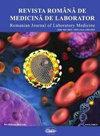利用高通量16S rRNA基因扩增子测序深入了解罗马尼亚强直性脊柱炎患者的粪便微生物群组成
IF 0.5
4区 医学
Q4 MEDICINE, RESEARCH & EXPERIMENTAL
引用次数: 0
摘要
摘要介绍。新一代测序技术的应用产生了大量关于肠道微生物组成的信息,用于了解其在健康状态和各种疾病中的作用。我们旨在提供诊断为强直性脊柱炎(一种与遗传易感性和肠道生态失调相关的免疫介导的关节病)的罗马尼亚受试者肠道微生物群组成的信息。方法。本文采用离子激流PGM仪器对25例强直性脊柱炎患者和16例健康对照者的粪便样本进行了高通量DNA测序,分析了7个不同高变区16S rRNA扩增子。采用QIIME软件对宏基因组数据进行微生物组成分析,并结合线性判别分析效应大小(LEfSe)对分类群进行差异丰度分析。结果。41份样本共鉴定出14门114科114属275种,其中拟杆菌门、厚壁菌门和变形菌门,拟杆菌科、普氏菌科和瘤胃菌科,拟杆菌属、普氏菌属、粪杆菌属和copri普氏菌属最为丰富。利用不同的丰度和流行度截断值,确定了核心分类成员,这些成员通常在患者和对照组之间共享。然而,有证据表明,前一组微生物组的多样性低于对照组,并且某些分类群在两组之间具有显著不同的丰度。结论。该研究允许对AS本地人群的肠道微生物群进行信息丰富的高通量16S rRNA分析,以确定风险的微生物组特征。本文章由计算机程序翻译,如有差异,请以英文原文为准。
An insight into the fecal microbiota composition in Romanian patients with ankylosing spondylitis using high-throughput 16S rRNA gene amplicon sequencing
Abstract Introduction. Application of next-generation sequencing technology generated a massive amount of information on the gut microbiome composition used to understand its role in the healthy state and in various diseases. We aimed to provide information on the gut microbiota composition of Romanian subjects diagnosed with ankylosing spondylitis, an immune-mediated arthropathy linked to a genetic predisposition and gut dysbiosis. Methods. Stool samples collected from 25 patients with ankylosing spondylitis and 16 healthy controls were investigated using high-throughput DNA sequencing of 16S rRNA amplicons from seven different hypervariable regions and Ion Torrent PGM instrument. Microbial composition of metagenomic data was analyzed with QIIME software and differential abundance analysis of taxa encompassed linear discriminant analysis effect size (LEfSe). Results. Overall, 14 phyla, 114 families, 114 genera, and 275 species were identified across the 41 samples, the aggregated data revealing as most abundant the phyla Bacteroidetes, Firmicutes, and Proteobacteria, the families Bacteroidaceae, Prevotellaceae, and Ruminococcaceae, the genera Bacteroides, Prevotella, and Faecalibacterium, and Prevotella copri species. Using various cutoffs for abundance and prevalence, core taxonomic members were identified which in general were shared between the patients and controls. However, evidence was gained that the diversity in the microbiomes from the former cohort was lower than for controls and that certain taxa had significantly different abundance between the two groups. Conclusion. This study allowed an informative high-throughput 16S rRNA profiling of the gut microbiota needed to identify microbiome signatures of risk in the autochthonous population with AS.
求助全文
通过发布文献求助,成功后即可免费获取论文全文。
去求助
来源期刊

Revista Romana De Medicina De Laborator
MEDICINE, RESEARCH & EXPERIMENTAL-
CiteScore
0.31
自引率
20.00%
发文量
43
审稿时长
>12 weeks
期刊介绍:
The aim of the journal is to publish new information that would lead to a better understanding of biological mechanisms of production of human diseases, their prevention and diagnosis as early as possible and to monitor therapy and the development of the health of patients
 求助内容:
求助内容: 应助结果提醒方式:
应助结果提醒方式:


